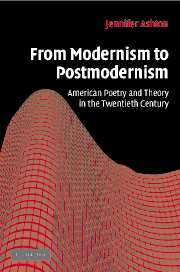Book contents
- Frontmatter
- Contents
- Acknowledgments
- Introduction: modernism's new literalism
- Chapter 1 Gertrude Stein for anyone
- Chapter 2 Making the rose red: Stein, proper names, and the critique of indeterminacy
- Chapter 3 Laura (Riding) Jackson and T=H=E N=E=W C=R=I=T=I=C=I=S=M
- Chapter 4 Modernism's old literalism: Pound, Williams, Zukofsky, and the objectivist critique of metaphor
- Chapter 5 Authorial inattention: Donald Davidson's literalism, Jorie Graham's Materialism, and cognitive science's embodied minds
- Notes
- Index
Chapter 2 - Making the rose red: Stein, proper names, and the critique of indeterminacy
Published online by Cambridge University Press: 22 September 2009
- Frontmatter
- Contents
- Acknowledgments
- Introduction: modernism's new literalism
- Chapter 1 Gertrude Stein for anyone
- Chapter 2 Making the rose red: Stein, proper names, and the critique of indeterminacy
- Chapter 3 Laura (Riding) Jackson and T=H=E N=E=W C=R=I=T=I=C=I=S=M
- Chapter 4 Modernism's old literalism: Pound, Williams, Zukofsky, and the objectivist critique of metaphor
- Chapter 5 Authorial inattention: Donald Davidson's literalism, Jorie Graham's Materialism, and cognitive science's embodied minds
- Notes
- Index
Summary
To readers operating in the wake of poststructuralist theory – particularly those affiliated with the language movement – Stein's poetry has been the irrefutable evidence of her proto-postmodernism. Take, for example, the lines “So great so great Emily./Sew grate sew grate Emily” or “A go to green and a letter spoke a go to green or praise or/Worships worships worships” from Stein's 1913 poem “Sacred Emily,” where her famous line “Rose is a rose is a rose is a rose” first appears. In lines like these, meaning becomes indeterminate, the postmodernist argument runs, because we can't decide whether a word like “go” is being used as a noun or an infinitive or an imperative verb, or because we are confronted with the fact that the same sounds – sō grāt – correspond to multiple meanings. And for readers in search of Stein's postmodernism, ambiguities like these seem all the more urgently underscored by Stein's own remarks about the literary aims of her trademark ruptured syntax, interchanged parts of speech, and homophonic puns in her much cited lecture “Poetry and Grammar.” Certainly the conclusion of the previous chapter – that Stein's work is designed above all to reveal (and continually rehearse) the logical conditions of possibility for representing “any thing” and “any one” – would seem to add to the evidence.
- Type
- Chapter
- Information
- From Modernism to PostmodernismAmerican Poetry and Theory in the Twentieth Century, pp. 67 - 94Publisher: Cambridge University PressPrint publication year: 2006



